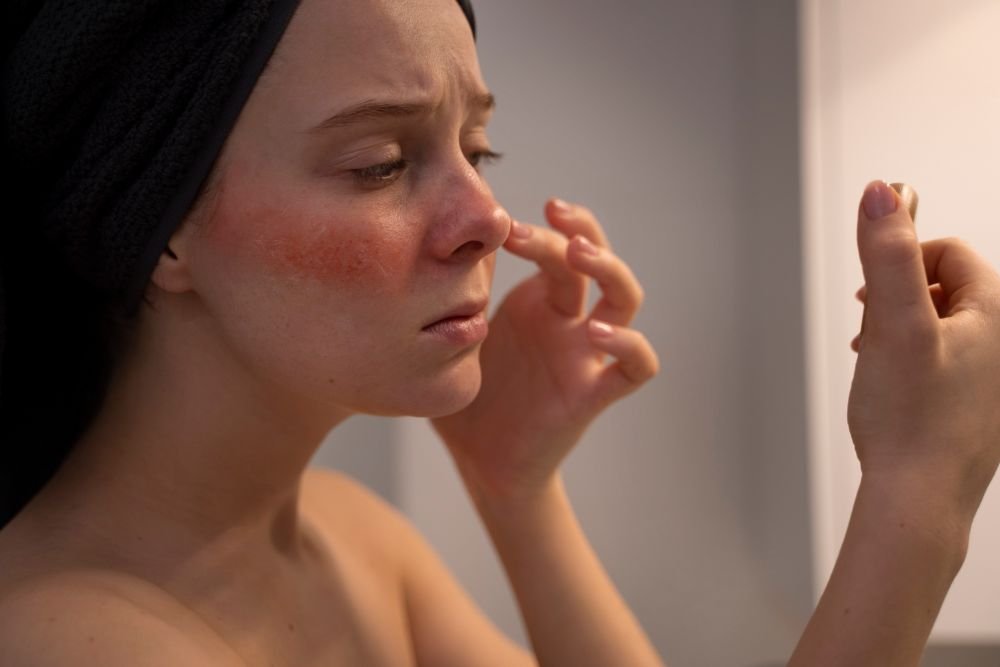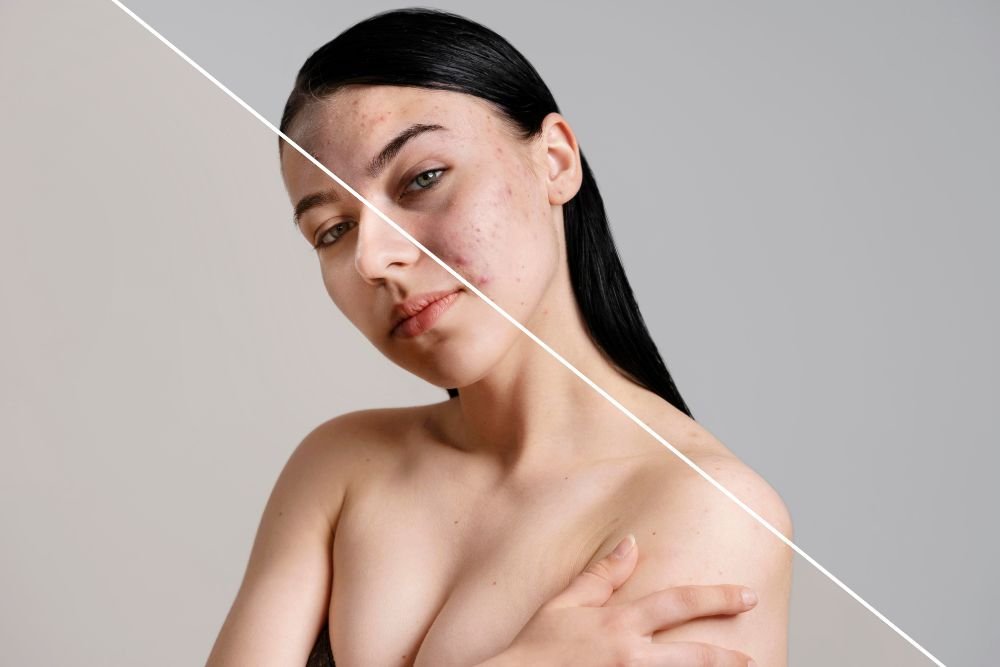When it comes to skin care, understanding skin rash types can be the key to maintaining healthy and radiant skin.
Skin rashes are essentially a visual communication from our bodies indicating that something is wrong. They might range from minor redness or irritation to more serious conditions such as eczema or psoriasis.
It is crucial to pay attention to these indications and act quickly to prevent the illness from worse. The importance of quickly recognizing and treating skin rashes cannot be emphasized.
Without adequate treatment, a mild rash can turn into a severe and difficult-to-treat illness. Early action can not only relieve discomfort, but also avoid future issues.
So, what exactly are skin rash types? This article will delve into various types of skin rashes, from the common and mild to the more severe and chronic, and will offer insights into how to identify and manage them effectively.
Table of Contents
Common Types of Skin Rashes

When it comes to skin health, staying informed about the many types of skin rash types is essential.
Whether it’s the infamous diaper rash, the irritating prickly heat, or the more severe psoriasis, understanding what causes these rashes, how they develop, and the best ways to manage them can dramatically improve your skin’s condition and general comfort.
Contact Dermatitis
Ever wondered what causes those red, itchy rashes after touching something? It’s usually contact dermatitis, which occurs when your skin reacts to allergens or irritants.
Managing this rash typically entails avoiding the trigger, addressing the symptoms, and utilizing gentle skincare products.
Eczema (Atopic Dermatitis)
One of the more common skin rash types, eczema is a chronic condition where the skin becomes inflamed and itchy.
It can be provoked by a variety of reasons, including allergens, stress, and harsh weather. Moisturizing, avoiding harsh soaps, and identifying triggers are essential for managing eczema.
Psoriasis
This autoimmune illness causes rapid skin cell development, resulting in thick, scaly areas on the skin.
Genetics and the immune system both play important roles in psoriasis. Although not curable, therapy seeks to alleviate symptoms and enhance quality of life.
Urticaria (Hives)
These welts or lumps on the skin form when histamine is released and blood plasma spills from small blood vessels.
Urticaria can be caused by allergic reactions or other causes such as stress, heat, or friction. Antihistamines can often help with symptoms.
Seborrheic Dermatitis
This rash typically develops on the scalp, although it can also affect other locations with sebaceous glands.
It is caused by an overgrowth of a yeast called Malassezia, and stress, hormones, and drugs can exacerbate the condition.
Medicated shampoos and topical therapies are commonly used for management.
Heat Rash (Miliaria)
When sweat is trapped in the sweat ducts due to blocked pores, heat rash can occur.
Common in hot and humid climates, it usually appears as red bumps and is treated with cool compresses and avoiding heat.
Prickly Heat (Miliaria Rubra)
Similar to heat rash, prickly heat occurs when sweat glands become blocked, but it specifically results in a rash with a prickling or stinging sensation.
Keeping the skin cool and dry is crucial in managing this condition.
Intertrigo
This rash appears in skin folds and is often the result of friction and moisture, creating an ideal environment for bacteria or yeast growth.
Good hygiene, keeping the skin dry, and using barrier creams can help manage and prevent intertrigo.
Diaper Rash
Babies and adults alike can suffer from the discomfort of diaper rash, usually caused by prolonged exposure to wetness or irritants.
Keeping the diaper area clean and dry, using diaper creams, and changing diapers frequently can prevent and treat this common rash.
Shingles (Herpes Zoster)
Caused by the varicella-zoster virus, which also causes chickenpox, shingles manifests as a painful rash with blisters.
After chickenpox, the virus remains dormant in the body and can reactivate later in life as shingles. Vaccination can prevent shingles, and antiviral medications can treat it.
Ringworm (Tinea Corporis)
Despite its name, ringworm is not caused by worms but rather by a fungus. It’s characterized by a red or silver rash in a ring shape and is typically treated with antifungal medications.
Unlock the Science Behind Ageless Beauty: It’s All About Your Gut! Learn the Secret Today!
In conclusion, understanding skin rash types can empower you to identify and manage these conditions effectively.
Whether it’s a minor inconvenience like a heat rash or a more persistent issue like eczema, knowing how to recognize, prevent, and treat these rashes can make a significant difference in your skin’s health and your overall well-being.
7 Tips for Caring for Skin Rashes
When skin rash types strike, it’s crucial to know how to care for them effectively.
These seven tips can help alleviate discomfort and promote healing, allowing you to get back to enjoying healthy, radiant skin.
1. Keep the affected area clean and dry

It sounds simple, but maintaining good hygiene is essential for managing skin rash types.
Gently clean the area with a mild soap and lukewarm water, then pat it dry with a clean towel. Avoid scrubbing or rubbing the rash, as this can further irritate the skin.
2. Avoid scratching the rash
Although it may be tempting to scratch that itch, resist the urge. Scratching can break the skin and introduce bacteria, leading to infection.
Instead, try applying a cool compress or using over-the-counter anti-itch creams to soothe the itchiness.
3. Use gentle, fragrance-free skincare products
Many skincare products contain harsh chemicals and fragrances that can exacerbate skin rash types.
Opt for products that are labeled as “hypoallergenic” or “fragrance-free,” and be sure to do a patch test before using any new product on the affected area.
4. Avoid triggers known to worsen the rash
If you’ve identified specific triggers for your skin rash types, do your best to avoid them. This could include certain foods, environmental allergens, or even stress.
By minimizing exposure to these triggers, you can help prevent flare-ups and promote healing.
5. Wear loose-fitting, breathable clothing
Tight or synthetic clothing can trap heat and moisture, which can worsen skin rash types.
Opt for loose-fitting, breathable fabrics like cotton or linen, and try to keep the affected area as cool and dry as possible.
6. Apply a cool compress to soothe itching and inflammation
When your skin rash types are particularly itchy or inflamed, a cool compress can provide relief.
Simply soak a clean cloth in cool water, wring it out, and apply it to the affected area for 15-20 minutes. This can help reduce itching and inflammation, promoting healing.
7. Seek medical advice if the rash does not improve within a few days
While many skin rash types can be managed at home, some may require medical attention.
If your rash does not improve within a few days despite following these tips, or if it becomes more severe or spreads, it’s important to seek medical advice.
A healthcare professional can help determine the underlying cause of the rash and recommend appropriate treatment.
By following these seven tips for caring for skin rash types, you can help alleviate discomfort and promote healing.
Remember, everyone’s skin is unique, so what works for one person may not work for another.
It may take some trial and error to find the best approach for managing your skin rash types, but with patience and persistence, you can achieve healthy, radiant skin.
Bonus Tip: Seeking Professional Help
When it comes to skin rash types, knowing when to seek professional help can make all the difference in your recovery. Here’s what you need to know:
1. When to seek medical advice for a skin rash: While many skin rash types can be managed at home, there are instances when it’s essential to seek medical attention. These include:
- If your rash is severe, painful, or spreading rapidly
- If you have a fever along with the rash
- If the rash is not improving or is getting worse despite home remedies
- If the rash is located in sensitive areas like the face, genitals, or mucous membranes
- If you have other symptoms like difficulty breathing, dizziness, or swelling of the face or throat
2. Types of healthcare professionals who can help: Depending on the severity and cause of your skin rash types, different healthcare professionals may be able to assist you. These can include:
- Dermatologists: Specialists in diagnosing and treating skin conditions, including rashes.
- General Practitioners (GPs): Primary care physicians who can assess your symptoms and refer you to a specialist if needed.
- Allergists: Experts in diagnosing and treating allergies, which can often be a trigger for skin rash types.
- Immunologists: Specialists who can help manage autoimmune conditions like psoriasis.
3. The importance of getting a proper diagnosis and treatment: Getting a proper diagnosis and treatment for your skin rash types is crucial for several reasons:
- It ensures you are addressing the underlying cause of the rash rather than just managing symptoms.
- It can help prevent the rash from worsening or spreading.
- It can provide relief from discomfort and improve your overall quality of life.
Conclusion Everything You Need to Know About Skin Rash Types
In conclusion, understanding and effectively managing skin rash types can greatly improve your skin health and overall well-being. Remember:
- Stay Informed: Learn about different types of skin rash types and how to identify and manage them.
- Maintain Good Hygiene: Keep the affected area clean and dry and avoid scratching the rash.
- Use the Right Products: Choose gentle, fragrance-free skincare products and wear loose-fitting, breathable clothing.
- Seek Professional Help When Needed: Don’t hesitate to seek medical advice if your rash does not improve or if you have other concerning symptoms.
- Be Proactive: Take an active role in managing your skin health by following these tips and seeking professional help when necessary.
With these strategies in mind, you can take control of your skin health and enjoy healthy, radiant skin.
Don’t let skin rash types hold you back from living your best life. Take action today and prioritize your skin health!

